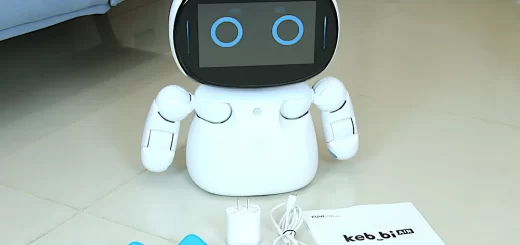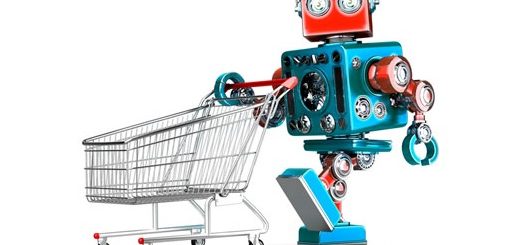Applications of Artificial intelligence in agriculture, Agricultural robots, Drones and Plantix app
Agricultural robots will save money, increase yields, reduce energy usage and improve quality, a robot can help farmers pick and pack their crops, technology can help farmers maximize their resources, It is likely to result in increased agricultural productivity and returns to investment & improved environmental sustainability.
Applications of AI in Agriculture
Artificial Intelligence (AI) is used in many different industries, From manufacturing to automotive, One of the most interesting industries that AI is breaking into is agriculture, Agriculture is a major industry and a huge part of the foundation of our economy, As climates are changing & populations are increasing, AI is becoming a technological innovation that is improving & protecting crop yield.
The most popular applications of Artificial Intelligence in agriculture industry are three major categories which are Agricultural Robots, Predictive Analytics, Crop & Soil Monitoring, Computer vision & deep-learning algorithms are used to process data captured by drones and/or software-based technology to monitor crop & soil health, Machine learning models are used to track & predict various environmental impacts on crop yield such as weather changes.
Agricultural robots
Agricultural Robots are used to handle essential agricultural tasks such as harvesting crops at a higher volume & faster pace than human laborers, Robots are designed to assist in picking & packing crops while combating other challenges within the agricultural labor force, Agricultural robots can protect crops from harmful weeds that may be resistant to herbicide chemicals that are meant to eliminate them.
Automation & robotics can help farmers find more efficient ways to protect their crops from weeds, A robot called See & Spray reportedly leverages computer vision to monitor & precisely spray weeds on cotton plants, Precision spraying can help prevent herbicide resistance, Automation eliminates 80% of the volume of chemicals normally sprayed on crops and can reduce herbicide expenditures by 90%.
Automation can help address challenges in the labor force, The industry is projected to experience a 6% decline in agricultural workers from 2014 to 2024, Robot mounted with a camera and a laser scanner can predict the expected yield of the plants, A robot can help farmers pick and pack their crops, Lack of laborers has led to millions of dollars of revenue losses in key farming regions.
The robot can harvest 8 acres in a single day and replace 30 human laborers, An estimated 40% of annual farm costs are funneled into “wages, salaries and contract labor expenses” for crops such as fruits and vegetables where labor needs tend to be the highest.
Plantix app
Plantix app identifies potential defects & nutrient deficiencies in soil, The app uses images to detect plant diseases, The image recognition app can identify possible defects through images captured by the user’s smartphone camera, The farmers can participate in the online community to network with other farmers to discuss plant health issues and access their local weather reports.
Plantix can diagnose plant diseases, pest damages and nutrient deficiencies affecting crops and offers corresponding treatment measures, Users are provided with soil restoration techniques, Analysis is conducted by software algorithms that correlate particular foliage patterns with certain soil defects, plant pests & diseases
Drones
Drone technology helps users improve their crop yield & reduce costs, Users pre-program the drone’s route and once deployed the device will leverage computer vision to record images which will be used for analysis, AI & aerial technology can monitor crop health, When the drone completes its route, users can transfer a USB drive from the drone to the computer and upload the captured data to a cloud drive, It can use algorithms to integrate & analyze the captured images and data.
Drones offer high-quality imaging that can help monitor crops while scanning and analyzing fields to collect necessary agricultural data, This imaging technology can assist in the identification of crops and their progress, including their health, and the determination of their readiness, these images can provide farmers with the ability to determine how ripe their crops are, and if and when they will be ready for harvest.
Imaging technology can assist with overall field management, providing estimates in real-time identifying where specific crops may require more water, fertilizer, soil or pesticides, Machine learning is used to provide an analysis of crop or soil health, Machine learning provides farmers and laborers with insights about the strengths & weaknesses of their soil, This is done to prevent and eliminate bad crops, and increasing the potential for healthy crops to grow.
Employing the use of agricultural drones would help increase crop production and monitor crop growth, Drones that uses AI help farmers to scan their fields and monitor every stage of the production cycle, This will help farmers to make data-driven decisions.
Agricultural drones allow farmers to see their fields from the sky, This birds-eye view would expose intending issues on the farm such as irrigation problems, soil variation as well as pest and fungal infestations, Having identified these issues, the farmer can come up with solutions to improve crop management and production.
As farmers can depend on the data that drones record to determine the state of the farm rather than walking all the distance, This gives the farmer time to focus on the big picture of production and expansion instead of spending excess time surveying their crops and the state of the farm, This drone is mounted with a sensor that uses the same wavelength, the same science as a satellite so literally it is like we are capturing satellite data at greater detail.
In agriculture, there are major applications of drone technology, such as crop monitoring, crop volume and vigour assessments, crop inventory, generation of prescription maps, precision spraying, an inspection of farm infrastructure, high-resolution mapping and surveying of individual fields, crop damage assessment & insurance claim forensics.
Low-cost drones help farmers detect pests and diseases on their crops and make informed decisions for improving crop water efficiency & yields, The farmers use RGB cameras & near-infrared cameras mounted on the drones to surveil and diagnose the plants for pests and diseases, water stress and nutrient deficiencies.
Extension workers have been trained to operate the drones and capture, analyze and present findings to the farmers, most of whom, without the technology, would be unable to determine that their plants could be nutritionally deficient, water-stressed, or under attack by crop pests, Drones detect these subtle changes in the crops before they are discernible to the human eye, thus enabling early intervention and saving farmers from losses.
Driverless tractors
A driverless tractor is an autonomous farm vehicle that delivers a high tractive effort at slow speeds, for tillage and other agricultural tasks, it can operate without the presence of a human inside the tractor itself, Self-driving tractors have the potential to optimize on-farm operations and offer a safer, less stressful working environment for farmworkers and their families.
Driverless tractors are programmed to observe their position, decide the speed and avoid obstacles such as animals, human beings or objects in the field performing their task, They operate with the aid of a supervisor monitoring the progress at a control station or with remote control from a distance.
Precise Farming
Precision farming uses Artificial intelligence to generate accurate and controlled techniques that help offer guidance & understanding about water and nutrient management, optimal harvesting and planting times as well as when the right times for crop rotation would be, These processes make farming more efficient, and can help predict ROI on specific crops based on their costs and margin within the market.
Improved ROI
By including data, for example, climate conditions, kind of soil, commercial centers, potential invasions, and information in the algorithm, AI can decide the best seeds to utilize and assist farmers maximize production, This can improve the ROI (Return on Investment) for all farms, AI innovation can process investigations that help farmers minimize losses in the production supply chain of their farms.
Agricultural robots advantages and disadvantages
Automatic milking or Robotic milking advantages and disadvantages
Artificial Intelligence in Agriculture advantages, disadvantages & uses



